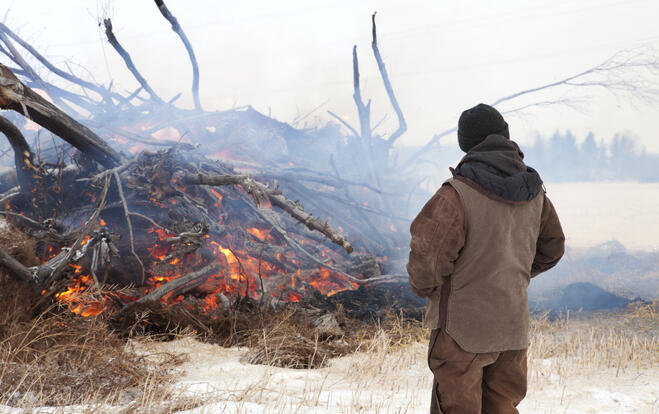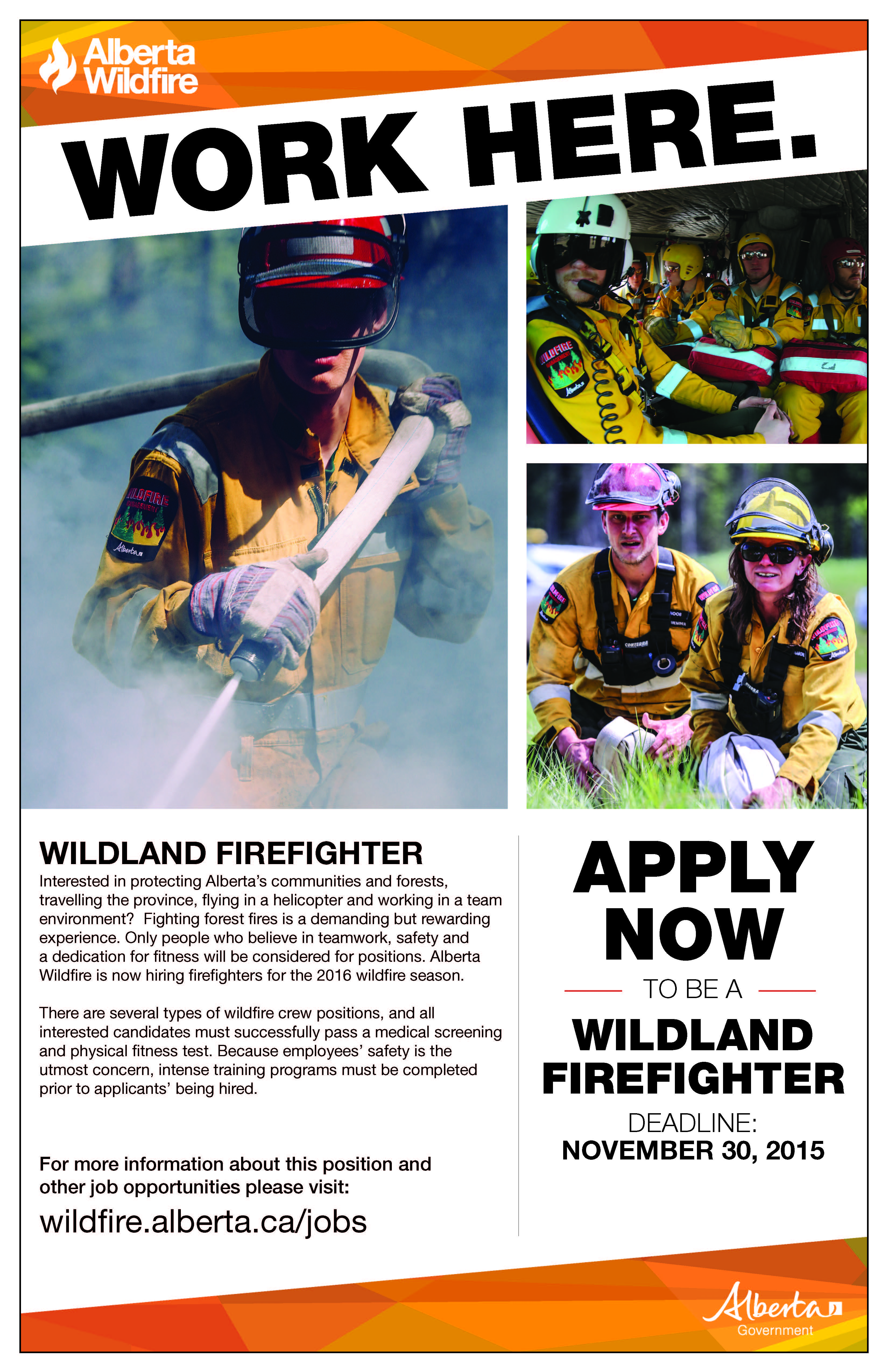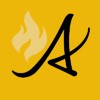
The 2015 fire season is now over and its time for the Peace River Wildfire staff to get busy with training, planning and preparing for the 2016 fire season! We would like to take this time to thank all of our amazing partners in wildfire prevention and control for all of your hard work and support this season. From the many 310-FIRE callers, to the dozer operators, firefighting crews, pilots, media partners, our numerous personnel, the dozens of firefighters that came from all over Canada and the world and each of the other individuals who helped us this season, we greatly appreciate your contribution! It's been quite the season and we couldn't have done it without you!
The Peace River Wildfire Management Area has had 188 wildfires and 5,000 hectares were burned in area this fire season. Of these fires, 72 human-caused, 2 are under investigation and 114 were caused by lightning. It is important to note that while nothing can be done to prevent lightning fires, all human caused wildfires are completely preventable. Please visit our website at www.wildfire.alberta.ca to find out how you can help prevent wildfires.
Despite the end of the wildfire season, the dried and cured grasses that are currently covering the landscape are extremely flammable and will remain so until they are covered with snow. Please continue to fully extinguish your fire before leaving the site and be aware that working near dry grass remains a hazard.
Permits are no longer required to burn within the Forest Protection Area of Alberta. Albertans living outside the Forest Protection Area can contact their municipality or local authority for more information about fire permit requirements.
BURN PILES DURING THE WINTER MONTHS
Check all winter burn piles before wildfire season begins again. Dig deep in the ashes and check for heat.
- Debris should be hauled and piled on an existing road or other compact areas to reduce the risk of fires holding over during the winter months.
- Avoid constructing piles where there are water drains (example: ditches, streams and creeks).
- Keep pile tall, tight and dirt freeto achieve a clean burn and avoid mixing mineral soil with the debris.
- Selecting the right machinery to construct piles such as a brush rake or loader.
- Piles should be built to a height of 3 meters in a beehive shape.
- It may be easier to burn an aspen pile by placing coniferous fuels at the bottom of the pile.
Check and re-check for winter holdovers: deep layers of organic soils are common throughout the area. This organic material may ignite under debris piles and smolder during the winter months. Wildfires like these are sleeping giants, waiting to take off when dry grasses are available to carry them on spring days.
You can help us over the winter: If you have concerns with a burn you are completing or you would like to report a winter burn location, please give us a call at the Peace River Fire Center (780) 624-6190.

SMOKE
Smoke is not just a summertime concern, and can be a danger in the winter as well. These pollutants can build up in the local area during cold weather, when there is little wind to disperse the particles. This often occurs during temperature inversions and in valleys and other areas that are sheltered from the wind.
Even though fire permits are not required smoke signs may be necessary if you burning near a road, contact the local road authority.
Wind direction is an important factor to take into account when deciding whether to start a burn. Consider what values are downwind of the proposed burn area. If you are close to other residences, communities, farmyards, roads, highways or other properties owned by someone else, take care to ensure that smoke from the fire does not interfere or present harm to those affected downwind.
Check Environment Canada’s Air Quality Health Index to track winter smog in your community and find health information.
ctober 31 marks the end of fire season, and while the hazard is low it does not mean the risk of wildfire is eliminated. Always fully extinguish your fire before leaving a site and be aware that working and recreating in dry grass is a fire hazard. This year the Grande Prairie Wildfire management area has recorded 85 wildfires burning an area of 223 hectares, 30 of these fires were lightning caused while the remaining 52 were all human caused fires.
Permits are no longer required to burn withing the Forest Protection Area of Alberta. Albertans living outside the Forest Protection Area must contact their municipality or local authority for more information about fire permit requirements for winter burning.
COME JOIN OUR TEAM!

Skip the morning commute and take a helicopter to work! Apply by November 30 to become a wildland firefighter. Please visit www.wildfire.alberta.ca/jobs for more information on our many seasonal job opportunities.
For more information contact:
Crystal Burrows - Wildfire Information Officer
(780)618-6215
crystal.burrows@gov.ab.ca
